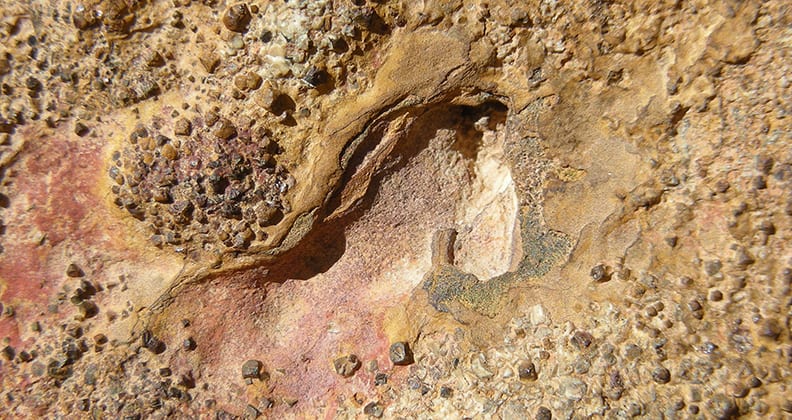New research backing claims that the Earth experienced a ‘geological lull’ in its development around 2.3 to 2.2 billion years ago has just been released by Curtin University.
Published today in Nature Geoscience, the research is likely to re-ignite debate over the Earth’s development, with scientists divided over what geologic processes occurred during the Palaeoproterozoic geologic era.
Lead researcher Dr Christopher Spencer from the School of Earth and Planetary Sciences at Curtin University said the research findings point to a near complete shutdown of continental magmatism during this period, and has profoundly shaped the geologic record as we know it today.
“Our research shows a bona fide gap in the Palaeoproterozoioc geologic record, with not only a slowing down of the number of volcanoes erupting during this time, but also a slow-down in sedimentation and a noticeable lull in tectonic plate movement,” Dr Spencer said.
“The early Paleoproterozoic was a significant time in Earth history. It was at this time when the atmosphere got its first whiff of oxygen and also the first global glaciation event. But this was also a period where other geologic processes effectively shut down. It’s almost as if the Earth experienced a mid-life crisis.”
The research involved compiling massive amounts of existing geological data as well as examination of rocks collected in Western Australia’s Stirling Ranges, China, Northern Canada and Southern Africa.
“The more rocks and data we collected the clearer it is that there is very little preserved record for this period,” Dr Spencer said.
“Earth’s mantle used to be much hotter than it is today and over time volcanoes allowed the mantle to cool and geologic processes are thought to have slowed down. We believe this continual slowdown led to dramatic geological changes such as those seen in the early Paleoproterozoic.
“This ‘dormant’ period lasted around 100 million years and signalled what we believe was a shift from ‘ancient-style’ tectonics to ‘modern-style’ tectonics more akin to those operating in the present day. Following this dormant period Earth’s geology started to ‘wake-up’ again around 2.2 to 2.0 billion years ago with a ‘flare-up’ of volcanic activity and a shift in the composition of the continental crust.”
Dr Spencer believes these findings could provide greater insight into our understanding of the world’s natural resources and where they exist, and has suggested more research is now needed into this time period to better determine how the earth’s geological processes were impacted.
The full research paper has been published in Nature Geoscience and can be found online here.



